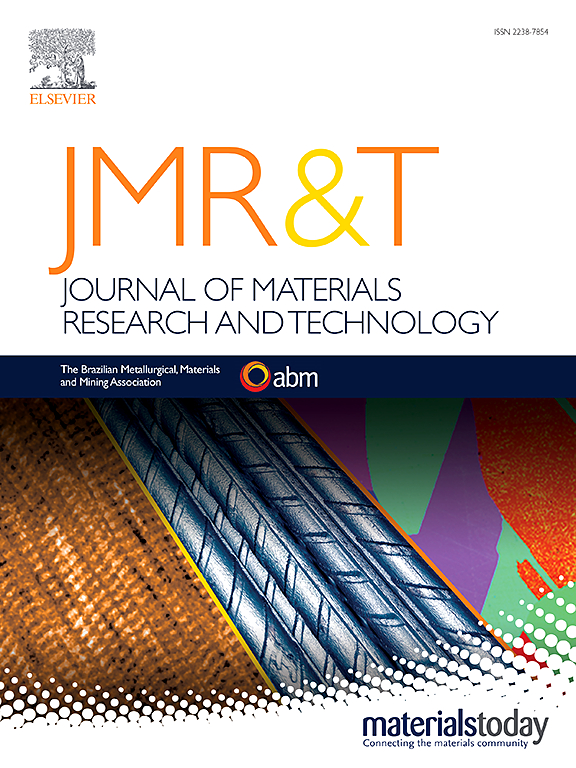Research on improving the simulation accuracy of HIP near-net-shape forming by coupling DEM and FEM
IF 6.2
2区 材料科学
Q1 MATERIALS SCIENCE, MULTIDISCIPLINARY
Journal of Materials Research and Technology-Jmr&t
Pub Date : 2025-03-14
DOI:10.1016/j.jmrt.2025.03.130
引用次数: 0
Abstract
This study enhances the simulation accuracy of hot isostatic pressing (HIP) near-net shaping for complex components by coupling the discrete element method (DEM) and finite element method (FEM). The powder filling process was simulated using DEM in EDEM software, considering the effects of vibration parameters (frequency and amplitude) on filling density. The DEM results were then integrated into FEM simulations in MSC. Marc to analyze the densification behavior during HIP. Two models were compared: Model 1 with uniform initial density distribution and Model 2 with non-uniform density distribution based on DEM results. The simulations were validated against experimental results from HIP processing of TA15 titanium alloy powder. The DEM simulation revealed that optimal filling density was achieved at a vibration frequency of 35 Hz and amplitude of 0.5 mm. The filling density in the “L" region of the double-stepped cylinder capsule was significantly lower than in other areas due to its complex geometry. The FEM simulations showed that Model 2 provided higher accuracy in predicting the final component shape and densification behavior compared to Model 1. The maximum relative density reached 97.89 % in Model 1 and 98.30 % in Model 2 after HIP, with Model 2 showing better agreement with experimental results in terms of relative density distribution. The coupling of DEM and FEM simulations effectively enhanced the accuracy of predicting powder filling and densification during HIP. Model 2 provided more realistic predictions of the final component properties, highlighting the importance of considering actual powder filling behavior in simulations. This approach can guide the design of capsule structures and HIP process parameters to achieve high-quality components with uniform mechanical properties.
求助全文
约1分钟内获得全文
求助全文
来源期刊

Journal of Materials Research and Technology-Jmr&t
Materials Science-Metals and Alloys
CiteScore
8.80
自引率
9.40%
发文量
1877
审稿时长
35 days
期刊介绍:
The Journal of Materials Research and Technology is a publication of ABM - Brazilian Metallurgical, Materials and Mining Association - and publishes four issues per year also with a free version online (www.jmrt.com.br). The journal provides an international medium for the publication of theoretical and experimental studies related to Metallurgy, Materials and Minerals research and technology. Appropriate submissions to the Journal of Materials Research and Technology should include scientific and/or engineering factors which affect processes and products in the Metallurgy, Materials and Mining areas.
 求助内容:
求助内容: 应助结果提醒方式:
应助结果提醒方式:


